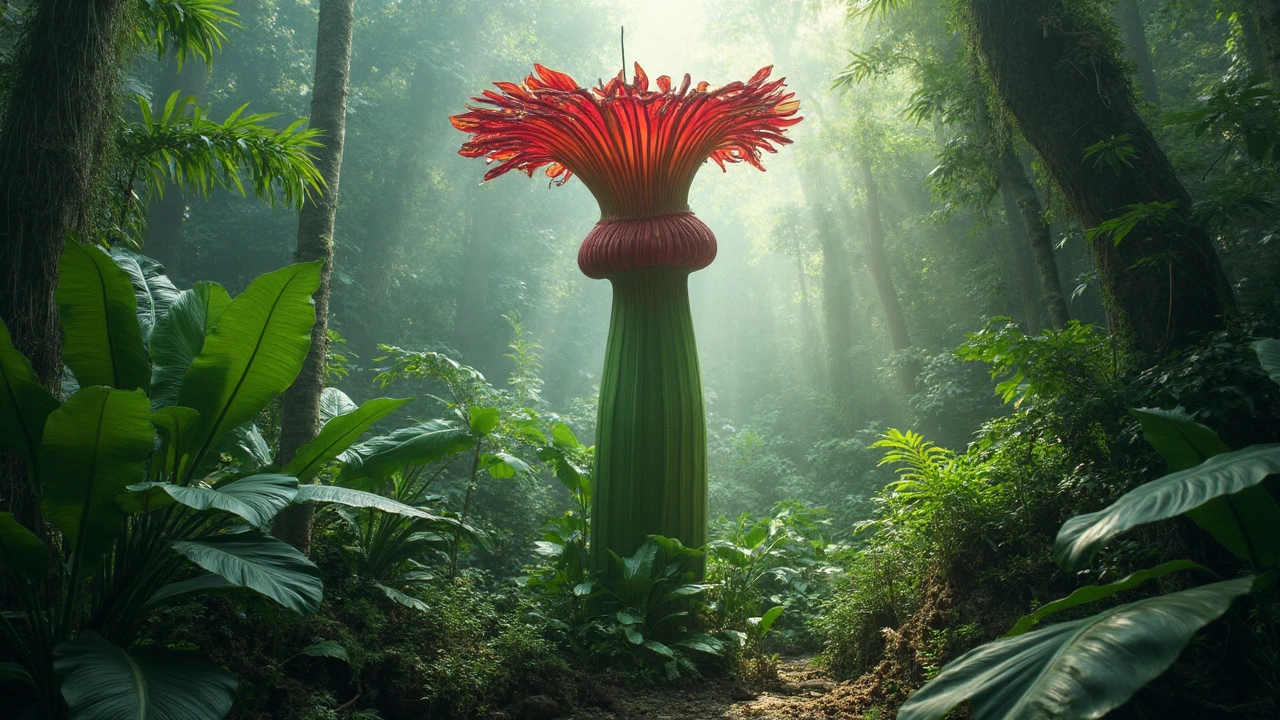Corpse Flower: Amazing Facts, Care Tips and Why It Smells
If you ever hear about a plant that can grow taller than a person and smells like a rotting animal, you are probably hearing about the corpse flower. Its scientific name is Titan arum, and it is one of the biggest and most unusual flowering plants on Earth.
The plant lives in the rain‑forests of Sumatra, Indonesia. In the wild it hides under the forest floor most of the year, storing energy in a massive underground tuber. When the time is right, it sends up a single huge leaf that can be up to 6 meters long. A few weeks later, a huge flower structure appears.
What Makes the Bloom So Special?
The corpse flower’s bloom is actually two parts: a tall, white spathe that looks like a giant petal, and a deep, brown spadix that sits inside. The spadix can reach 3 meters high. When it opens, the plant releases heat and a smell that many describe as rotting meat. This foul aroma attracts carrion‑eating insects, which carry the plant’s pollen to another corpse flower.
One bloom may last only 24 to 48 hours, and the plant might not flower again for several years. The waiting period can be anywhere from 3 to 10 years, depending on climate, nutrients and the size of the tuber.
Can You Grow a Corpse Flower at Home?
Growing a corpse flower is a huge challenge. You need a warm, humid environment with temperatures between 20‑30 °C and consistent moisture. The tuber itself can weigh over 100 kg, so you need a strong support structure and plenty of space.
Most hobby growers start with a young plant from a reputable nursery and keep it in a greenhouse. They use a well‑draining mix of peat, sand and perlite, and fertilize with a balanced, slow‑release formula. Regular misting helps keep the humidity high, while good airflow prevents fungal problems.
Even with perfect care, a home‑grown corpse flower may take many years before it decides to bloom. Patience is a must, and most growers enjoy the journey more than the brief appearance of the flower itself.
If you want to see a corpse flower without the hassle of growing one, look for botanical gardens or special exhibitions that host the plant. Major gardens in Europe, the US and Asia often invite the bloom for a short public display.
In India, a few specialized horticulture institutes have successfully cultivated Titan arum, but they usually keep the plant under strict scientific supervision. Keeping an eye on their announcements can give you a chance to witness the spectacle without traveling abroad.
Whether you admire it from afar or try to grow it yourself, the corpse flower reminds us how diverse and surprising nature can be. Its massive size, short‑lived bloom and the unmistakable smell make it a true botanical wonder.
Discovering the Corpse Flower: Nature's Bizarre Marvel
Ever heard of a flower that smells like a dead body? Meet the Titan Arum, also known as the corpse flower. Native to Indonesia, this bizarre plant is famous for its powerful, unique aroma that mimics rotting flesh. While it might not be a garden favorite scent-wise, its massive size and fascinating blooming cycle make it a striking addition to any garden enthusiast's collection. Read on to explore its intriguing characteristics and tips for growing it.
About
Flower Gardening
Latest Posts


Mixing Top Soil with Garden Soil: Smart Tips for Terrace Gardening
By Alden Thorne Apr 1, 2025

Optimal Soil Depth for Rooftop Gardens - How Deep Should It Be?
By Alden Thorne Oct 23, 2025

Rarest Flower in India: What Makes the Neelakurinji So Unique?
By Alden Thorne May 21, 2025

